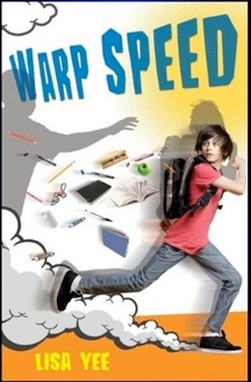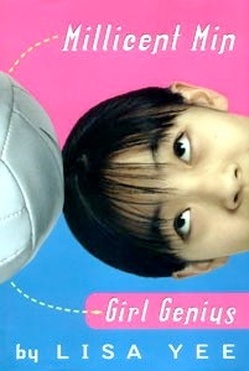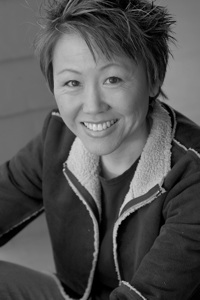Tell us about your most recent book and how you came to write it.

Warp Speed is about a Star Trek geek who is bullied every day. I wrote it because during an assembly a boy said, "I need to know what happens to Marley."
Marley was a minor character in Stanford Wong Flunks Big-Time who is bullied. Later, the boy's teacher told me that he had never spoken in class before -- that he was just like Marley.
I had no plans to write that book, but after a couple of years, I couldn't forget that boy, and I knew I needed to write Warp Speed.
Marley was a minor character in Stanford Wong Flunks Big-Time who is bullied. Later, the boy's teacher told me that he had never spoken in class before -- that he was just like Marley.
I had no plans to write that book, but after a couple of years, I couldn't forget that boy, and I knew I needed to write Warp Speed.
Do you think of yourself as a diverse author?
Who is your favorite character of all time in children’s or young adult literature?
Hypothetically speaking, let’s say you are forced to sell all of the books you own except for one. Which do you keep?
I'd probably keep Millicent Min, Girl Genius by . . . me. Here's why. When the book won the Sid Fleischman Humor Award, I was overwhelmed. I had always admired Sid Fleischman. I asked him to sign my book, and he wrote the most lovely heartfelt inscription. I will cherish that, always.
What does diversity mean to you as you think about your own books?
I hope that it breaks down stereotypes and that people can see themselves in my characters, or empathize with them, no matter what race, sex or religion they are.
What is your thought process in including or excluding characters of diverse backgrounds?
Please write
an example of a paragraph that is tone deaf when it comes to cultural
diversity, then write the correct version. Explain the differences in
the third paragraph.
As the inscrutable Wan Kato, a second generation Chinese-American, was surrounded by ancient Asian artifacts he sipped his Oolong tea that was grown in the Guangdong province of China. The bitter dregs floated to the top of his cup. His grandson was coming home from Harvard. It had been easy for Jack to get into college, given his natural smarts and talents, just like it had been easy for the rest of his brothers and sisters to get into the Ivy Leagues. Wan Kato was pleased that Jack had no trouble fitting into Harvard.
Paragraph 2
As he sat in his cramped Chinatown apartment, Mr. Lui sipped his Oolong tea. The bitter dregs floated to the top of the cup. Normally, he hated that, but today nothing could bother him. His grandson was finally coming home. Despite graduating at the top of his high school class, Jack had been on a waiting list for months before finally getting into Harvard. However, now that he was there, Jack didn’t feel like he belonged.
Explanation
The first sentence of the first paragraph tries too hard to highlight the race of the main character. This makes the narrative more about China that him. It also uses a stereotype (“inscrutable”), plus “Kato” is a Japanese surname. The paragraph presupposes that Jack was easily accepted into Harvard and once there had no problems. However, the second paragraph is more accurate, revealing the truth about colleges – being an Asian-American can put one at a disadvantage. Today, many Ivy League schools are being accused of discriminating against Asian-American applicants. And if/when accepted, there still is a division of race on many college campuses.
Lisa Yee is the author of ten novels for young people. You can find out more about her at www.lisayee.com or read about her weekly writing adventures at www.lisayee.livejournal.com.


I'm always looking for books with diverse characters where the story is not entirely about diversity. The students at my school LOVE Warp Speed, as well as the other books in this series.
ReplyDeleteThe 'tone deaf' exercise is excellent! Or rather---your response to it is excellent! Thanks!
ReplyDeleteI did something similar with Anne Rockwell's picture book, BIG GEORGE. I took a look at her opening paragraph, and did a rewrite, and explained my rewrite. Here's her paragraph, followed by my rewrite:
Rockwell's paragraph:
Three hundred years ago, there was no United States of America. Instead, there were thirteen English colonies in North America.
Reese's re-write of that paragraph.
Three hundred years ago, there was no United States of America. Instead, there were hundreds of Native Nations. Europeans who had fled Europe had come to North America and were occupying lands that belonged to the Native Nations. These Europeans set up thirteen English colonies.
The full post is here: http://americanindiansinchildrensliterature.blogspot.com/2010/03/anne-rockwells-big-george-how-shy-boy_08.html
he first sentence of the first paragraph tries too hard to highlight the race of the main character. This makes the narrative more about China that him.
ReplyDelete